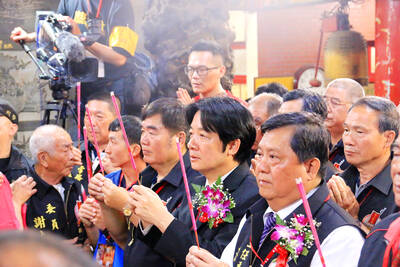When the captain of the Indian women’s cricket team was banned for two matches and fined for smashing the stumps with her bat in an angry outburst in July, the social media reaction was swift and harsh: Harmanpreet Kaur was called “pathetic” for her anger on the pitch, and labelled “disgusting and stupid.”
This is in stark contrast to the way people respond to male aggression in the sport. A quick search of the Web will find numerous discussion forums and articles lauding the “angry men of Indian cricket that you wouldn’t want to mess with, ” and cricketers such as Virat Kohli, who has been nicknamed “the Hulk” because “he is angry all the time.”
This deep-rooted belief that anger is a quality to be admired and cherished in men, but seen as a sign of lack of control and overreaction in women, is one of the key themes of my recent book, Hysterical: Exploding the Myth of Gendered Emotions. Throughout history, angry women have been demonized as harridans and dayans, or witches. They were burned at the stake, hanged or paraded naked in the streets.

Photo: Reuters
The expectations that underpinned such barbarism remain embedded in our society, throttling anyone who dares flout them. Female activists are regularly called “angry” on social media. I have personal experience of this, and testimonies of women from all over the world.
Women are accused of being bitter if they appear angry, which shifts the blame from the person behaving badly to the woman expressing her feelings about it
I have spoken about it before audiences in the United Arab Emirates, Mexico, India, China, Japan and Australia, and each time women have shared stories of how any expression of anger has been deemed undesirable and punished, and how they have internalized shame and guilt as a result.
When women are angry, it is seen as an innate personality trait emerging from the stereotype that women are inherently more emotional. This gendering of emotions has persisted throughout history. Men are not called fiery, feisty, lippy, hormonal or bitchy. These words are reserved for women who show their anger.
The south Asian women I saw on screen when I was growing up were submissive and polite, waiting for a hyper-masculine hero to come and rescue them. The women could cry and weep, but not shout and scream. They had to contort themselves into a framework of femininity that was appealing to the audience.
Women have always been angry. They are just giving themselves permission to express this anger openly
And even though there is a moment of reckoning in Indian cinema that is giving space to the angry woman — from the recent Polite Society to films such as Darlings or Stree — these women are often “unhinged” and vengeful. Their outrage is rarely seen as a valid form of emotional expression. I find the idea that women’s anger has to be vengeful very problematic.
Women in particular can be accused of being bitter if they appear angry, which is a strategy to shift the blame from the person who behaved badly to the woman’s mode of expressing her feelings about it. This puts the onus on the woman to modify her behavior, thus absolving the other person of any responsibility. It is a way of silencing her.
When this happens, the feeling of not being heard grows, and can lead to increasing frustration and further anger. The added responsibility for women to legitimize not only their anger but also its expression is exhausting.
A 2015 study showed that when men and women expressed their opinions in a decision-making group, expressions of anger led to more influence for men, while it decreased for women.
This is even more true for women of color, particularly in the workplace, where they are held to higher professional standards, albeit often implicitly. To counter this expectation, they have to work harder to moderate their emotions, especially if they aspire to leadership roles.
Ethnicity does not merely intersect with gender and class to shape emotional stereotypes, but also informs the emotional labor needed to be acknowledged as professional and competent, and be afforded high status.
Tokenism results in ethnic minority people being evaluated for how they act but also how they feel, so they have to suppress any feelings of hurt and frustration at being racialized, while presenting themselves as calm and pleasant through their actions and facial expressions. This creates an emotional culture that is built on racial inequality.
A recent poll showed that women are getting angrier all around the world. I would disagree — women have always been angry. They are just giving themselves permission to express this anger openly now.
And there is so much to be angry about. While women are becoming more comfortable with the many layers of their anger, it is doubtful whether we can change the social scripts that angry women are “disgusting” and “pathetic” or hysterical unless we change the message that exists all around us like smog: that women’s anger is unnatural.

The Democratic Progressive Party (DPP), Chinese Nationalist Party (KMT), and the country’s other political groups dare not offend religious groups, says Chen Lih-ming (陳立民), founder of the Taiwan Anti-Religion Alliance (台灣反宗教者聯盟). “It’s the same in other democracies, of course, but because political struggles in Taiwan are extraordinarily fierce, you’ll see candidates visiting several temples each day ahead of elections. That adds impetus to religion here,” says the retired college lecturer. In Japan’s most recent election, the Liberal Democratic Party lost many votes because of its ties to the Unification Church (“the Moonies”). Chen contrasts the progress made by anti-religion movements in

Taiwan doesn’t have a lot of railways, but its network has plenty of history. The government-owned entity that last year became the Taiwan Railway Corp (TRC) has been operating trains since 1891. During the 1895-1945 period of Japanese rule, the colonial government made huge investments in rail infrastructure. The northern port city of Keelung was connected to Kaohsiung in the south. New lines appeared in Pingtung, Yilan and the Hualien-Taitung region. Railway enthusiasts exploring Taiwan will find plenty to amuse themselves. Taipei will soon gain its second rail-themed museum. Elsewhere there’s a number of endearing branch lines and rolling-stock collections, some

Last week the State Department made several small changes to its Web information on Taiwan. First, it removed a statement saying that the US “does not support Taiwan independence.” The current statement now reads: “We oppose any unilateral changes to the status quo from either side. We expect cross-strait differences to be resolved by peaceful means, free from coercion, in a manner acceptable to the people on both sides of the Strait.” In 2022 the administration of Joe Biden also removed that verbiage, but after a month of pressure from the People’s Republic of China (PRC), reinstated it. The American

Chinese Nationalist Party (KMT) legislative caucus convener Fu Kun-chi (傅?萁) and some in the deep blue camp seem determined to ensure many of the recall campaigns against their lawmakers succeed. Widely known as the “King of Hualien,” Fu also appears to have become the king of the KMT. In theory, Legislative Speaker Han Kuo-yu (韓國瑜) outranks him, but Han is supposed to be even-handed in negotiations between party caucuses — the Democratic Progressive Party (DPP) says he is not — and Fu has been outright ignoring Han. Party Chairman Eric Chu (朱立倫) isn’t taking the lead on anything while Fu